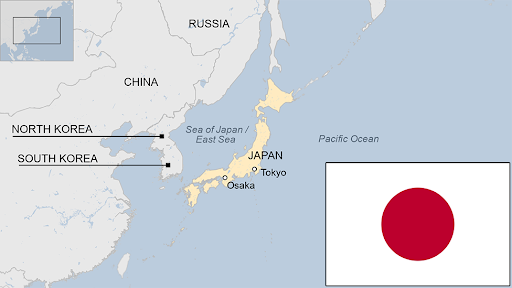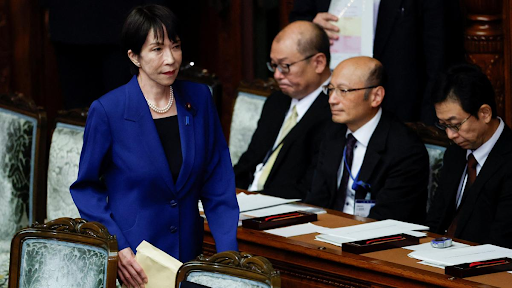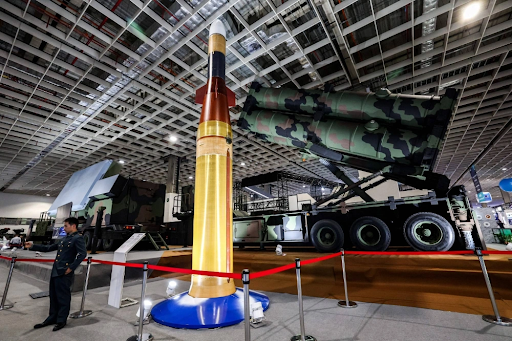Copyright infringement not intended
Picture Courtesy: THEHINDU
Context
India and Japan are enhancing their "Special Strategic and Global Partnership," by increasing cooperation in defense, economic security, and technology.
How have India-Japan Relations Evolved?
- Ancient Ties: India and Japan's relationship began in the 6th century with the arrival of Buddhism in Japan.
- Historical Event: In 752 AD, the Indian monk Bodhisena performed the eye-opening ceremony of the Lord Buddha statue at Todaiji Temple in Nara.
- Post-WWII Friendship: India signed a separate peace treaty with Japan in 1952, demonstrating friendship by not attending the San Francisco Peace Conference.
- Evolution of Partnership:
- Early 1990s: Gained momentum with India's 'Look East Policy.'
- 2014: Elevated to a 'Special Strategic and Global Partnership.'
- Shared Interests: The partnership is based on shared democratic values, economic objectives, and regional security interests.

Why is Japan Important to India?
Economic Powerhouse
- Japan is India's fifth-largest source of Foreign Direct Investment (FDI), with over $43 billion invested between 2000 and 2024. (Source: PIB)
- The Japan Bank for International Cooperation (JBIC) consistently ranks India as a top long-term investment destination.
- Bilateral trade totalled $ 25.17 billion during FY25; India Import $18.9 billion and Export $6.2 billion, trade deficit in Japan's favour.
Development Partner
- Japan is India's largest bilateral donor, providing Official Development Assistance (ODA) loans since 1958.
- By December 2024, Japan had extended over JPY 8,339 billion (about INR 4.6 trillion) for 336 projects across India. (Source” JICA)
- These funds support critical infrastructure like the Mumbai-Ahmedabad High-Speed Rail, Dedicated Freight Corridors (DFCs), the Delhi-Mumbai Industrial Corridor, and various metro systems.
Technological Expertise
- Japan offers advanced technological solutions vital for India's 'Make in India' and 'Digital India' initiatives.
- Collaboration spans high-speed rail, clean energy, digital infrastructure, and manufacturing.
Strategic Convergence
- Both nations are committed to a Free and Open Indo-Pacific (FOIP) vision.
- As members of the Quad, India and Japan work together to promote regional stability, enhance connectivity, and uphold a rules-based international order.
Why is India Important to Japan?
Geopolitical Importance
- Counterbalancing China: India acts as a counterweight to China's influence in the Indo-Pacific, aligning with Japan's "Free and Open Indo-Pacific" (FOIP) vision.
- Strengthening Regional Security: As Quad members, India and Japan are committed to upholding a rules-based order, freedom of navigation, and addressing security challenges in the Indo-Pacific.
- Deepening Defense Cooperation: Military interoperability has advanced through joint exercises (Malabar, JIMEX) and recent agreements on logistics support, defense equipment, and technology transfers.
Economic Significance
- Supply Chain Diversification: India, Japan, and Australia launched the Supply Chain Resilience Initiative (SCRI) to diversify supply chains in critical sectors.
- Securing Technology and Minerals: Agreements strengthen the semiconductor supply chain and secure critical mineral resources, leveraging India's tech manufacturing capabilities.
- Investment Opportunities: Japan is India's largest bilateral donor, funding major infrastructure projects (Mumbai-Ahmedabad High-Speed Rail, Delhi Metro).
- Accessing a Large Market: India's vast market offers opportunities for Japanese companies in various sectors.
Demographic Advantage
- Access to a Skilled Workforce: India's large youth population and IT talent pool are attractive to Japan, which faces an aging population.
- Promoting Skilled Migration: India and Japan have agreed to facilitate the exchange of 500,000 skilled workers over five years to address Japan's labor needs. (Source: PIB)
What is India's Policy Towards Japan?
Deepened Strategic Autonomy
India engages with Japan to diversify strategic partnerships and reduce over-reliance on any single nation, upholding strategic autonomy.
Economic Prosperity
India seeks Japanese investment, technology transfer, and ODA to fuel economic growth and infrastructure development.
Regional Security
India prioritises collaboration with Japan, bilaterally and through multilateral forums like the Quad, to ensure a stable, secure, and prosperous Indo-Pacific.
Comprehensive Engagement
India's policy extends to strengthening people-to-people ties, cultural exchanges, and cooperation in emerging areas like digital technologies and climate change.
What are the Challenges and Obstacles in India-Japan Relations?
Economic Hurdles
- Trade Deficit: India faces a trade deficit with Japan due to strict quality controls and non-tariff barriers impacting Indian exports.
- Project Implementation Delays: Bureaucratic and administrative inefficiencies in India cause setbacks in key infrastructure projects, such as the Mumbai-Ahmedabad High-Speed Rail, hindering economic cooperation.
- Competition for FDI: India lags behind ASEAN in attracting Japanese FDI, receiving $5.3 billion in 2024 compared to ASEAN's $28.7 billion. (Source: CSEP)
Strategic & Geopolitical Differences
- Strategic Divergence: India is less critical of China's actions in the South China Sea and Taiwan Straits, and remains neutral on the Russia-Ukraine conflict, unlike Japan which has imposed sanctions.
- Japan's Legal Restrictions: Japan's legal framework traditionally restricted military alliances and defense technology transfers, but recent revisions to export guidelines indicate growing flexibility.
- The China Factor: Both nations view China's growing Indo-Pacific assertiveness as a security concern, yet balancing this with economic ties remains complex.
Way Forward to strengthening India-Japan relations
Deepening Economic Ties
- Address the trade imbalance by reforming the Comprehensive Economic Partnership Agreement (CEPA) and increasing market access for Indian goods.
- Encourage Japanese Foreign Direct Investment (FDI) in critical sectors like semiconductors, critical minerals, and advanced manufacturing.
- Expand the Supply Chain Resilience Initiative (SCRI) to reduce strategic vulnerabilities and foster mutual growth.
Enhancing Defence Industrial Cooperation
- Move beyond joint exercises to co-develop and co-produce defense equipment, including advanced technologies like fighter jet engines and unmanned systems.
- Utilize the newly formed defense cooperation consultation body and revise the 2008 Joint Declaration on Security Cooperation to achieve tangible results.
Accelerating Infrastructure Development
- Fast-track existing Official Development Assistance (ODA)-backed projects, such as the bullet train and Dedicated Freight Corridors.
- Explore new projects in Northeast and strategic ports to enhance connectivity and regional development.
- Promote Japanese involvement in initiatives like the India-Japan Cooperation Initiative for Sustainable Economic Development in Africa to expand their joint footprint.
Boosting Technological Collaboration
- Leverage the India-Japan Digital Partnership (IJDP) for cooperation in advanced technologies, including AI (under the Japan-India AI Cooperation Initiative), 5G, cybersecurity, and quantum computing.
- Prioritize joint research and development, talent exchange, and ecosystem development in semiconductors.
Strengthening People-to-People Links
- Expand cultural exchanges, tourism, academic programs, and skill development initiatives to encourage deeper mutual understanding and address demographic needs.
- Facilitate mobility for Indian skilled professionals and talent to Japan for mutual benefits.
Strategic Alignment and Multilateralism:
- Maintain robust coordination within the Quad and other forums to uphold a free, open, and rules-based Indo-Pacific.
- Develop a coherent and unified approach to regional challenges, respecting each other's strategic autonomy, to solidify their partnership.
Conclusion
The India-Japan "Special Strategic and Global Partnership," rooted in shared values, is vital for Indo-Pacific stability. Overcoming economic, project, and defense challenges through collaboration, this partnership can ensure a secure future for Asia and the world.
Source: THEHINDU
PRACTICE QUESTION
Q. Despite strong strategic ties, India-Japan economic relations have not achieved their full potential. Critically analyze. 250 words
|
Frequently Asked Questions (FAQs)
Launched in 2021, the IJICP is an initiative to enhance industrial competitiveness by leveraging Japanese technology and investment. It promotes cooperation in logistics, textiles, and other key manufacturing sectors to support "Make in India" initiative.
Launched in 2021 by India, Japan, and Australia, the SCRI aims to build resilient supply chains in the Indo-Pacific region by diversifying sourcing away from dependency on a single country. It was motivated by the vulnerabilities exposed during the COVID-19 pandemic.
Established in 2022, this partnership focuses on securing stable energy supply while addressing climate change. It covers cooperation in electric vehicles (EVs), hydrogen, ammonia, and Carbon Capture, Utilization, and Storage (CCUS).










